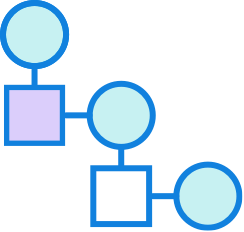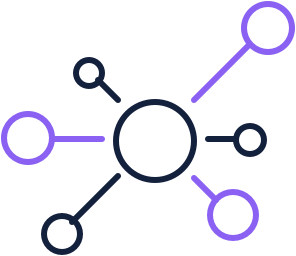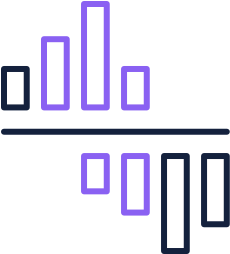Leading the way in de-risking clinical development with Al
AI opens a new window of innovation for drug development. Using Portfolio Optimizer, you can optimize your drug pipeline, select promising drug candidates early, assess the competitive landscape, and make highly informed business development decisions.

Do your internal probability of technical and regulatory success (PTRS) estimates utilize the best possible data available?
Are you concerned that your PTRS assessments may be too subjective?
Are your benchmarks inconsistent and based on limited information?
Does the process of expert solicitation take significant resources and time?
Do you need additional insights to inform asset and portfolio strategies?
Do you need to understand the competitive landscape for your asset better?
Do you want to understand how each trial design parameter affects PTRS assessment?

Do your internal probability of technical and regulatory success (PTRS) estimates utilize the best possible data available?

Are you concerned that your PTRS assessments may be too subjective?

Are your benchmarks inconsistent and based on limited information?

Does the process of expert solicitation take significant resources and time?

Do you need additional insights to inform asset and portfolio strategies?

Do you need to understand the competitive landscape for your asset better?

Do you want to understand how each trial design parameter affects PTRS assessment?
Assess current pipeline with real-time AI-driven PTRS for faster, more confident decisions.
Gain transparency and context with AI Explainability with PTRS drivers to understand the impact they have on the assessment.
Access comprehensive, granular, disease-specific benchmarks.
*Based on failed trials only in oncology and I&I
**Based on blockbuster drug
*Based on failed trials only in oncology and I&I
**Based on blockbuster drug
*Based on failed trials only in oncology and I&I
**Based on blockbuster drug
Portfolio Optimizer is broadly applicable across R&D and business development functions. Here are some relevant examples of where Portfolio Optimizer lends support and fits into your current workflows.


*Based on Intelligencia AI predictions as of May 2022 for oncology
programs with definite announcements in 2023.
Area under the curve (AUC) is a metric which indicates whether the model assigns higher probability to the approved programs higher than the failed ones. The higher the AUC the better.
The True Positive (sensitivity) and True Negative (specificity) rates highlight the ability of the model to correctly identify approved and rejected programs, accordingly. The higher the rates the better.
Brier Score Loss (BSL) is a metric that quantifies the accuracy of probability predictions. BSL penalizes high probabilities of failed programs and low probabilities of approved programs. The lower the BSL the better.
The Calibration Curve measures prospectively how closely the predicted probabilities match the actual and observed outcomes, helping to understand the reliability of the model.
Dynamic Benchmarks puts you in the driver’s seat to take the lead in benchmark analysis to enhance existing processes.
Data spans back to 1990 and includes clinical programs based on industry-led, FDA-tracked interventional studies.

What are the historical success rates of past assets?

What are the decisions that could lead to different clinical outcomes?

How does my asset compare to historical programs and their clinical trial choices?

How do I better understand the risk drivers for my asset or portfolio?
Data spans back to 1990 and includes clinical programs based on industry-led, FDA-tracked interventional studies.
What are the historical success rates of past assets?
What are the decisions that could lead to different clinical outcomes?
How does my asset compare to historical programs and their clinical trial choices?
How do I better understand the risk drivers for my asset or portfolio?

Access to depth and breadth of data based on unique program entity that goes beyond the molecule-indication level.

See both phase-by-phase and path-by-path analyses for better facilitating data-driven decision-making that captures a more comprehensive view of the clinical development path.

Customize your search with dynamic filtering to slice-and-dice data and surface relevant, real-time data.


View an accurate depiction of historical success rates to gain an in-depth picture of industry dynamics and trends.

Explore the importance of specific clinical development characteristics, such as demographics or regulatory designations to adjust risk predictions.

Calculate precise phase transition success rates and historical approval rates for each development phase to identify key differences between individual therapeutic areas.

Evaluate different development pathways to determine how they have affected the success rates of past programs to inform clinical trial design.

Explore the most promising indications and drug-related attributes to facilitate efficient decision-making for go/no-go decisions.

Understand the recent clinical development landscape and gauge your productivity relative to the market and competitors.

© Intelligencia AI. All rights reserved.